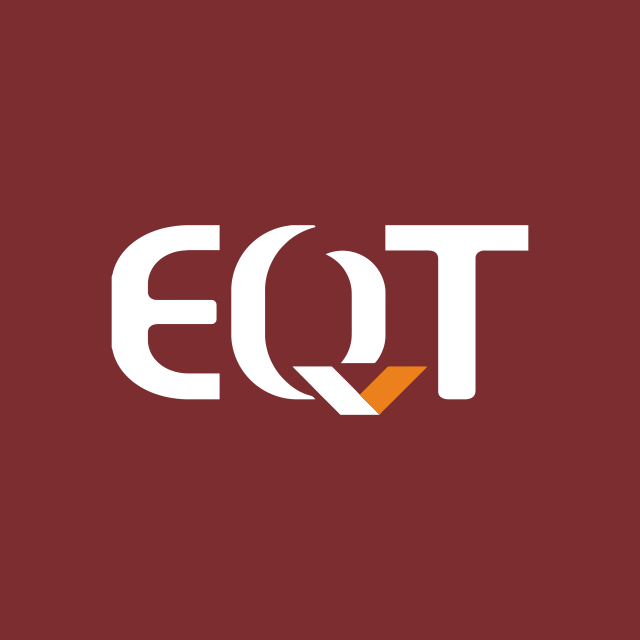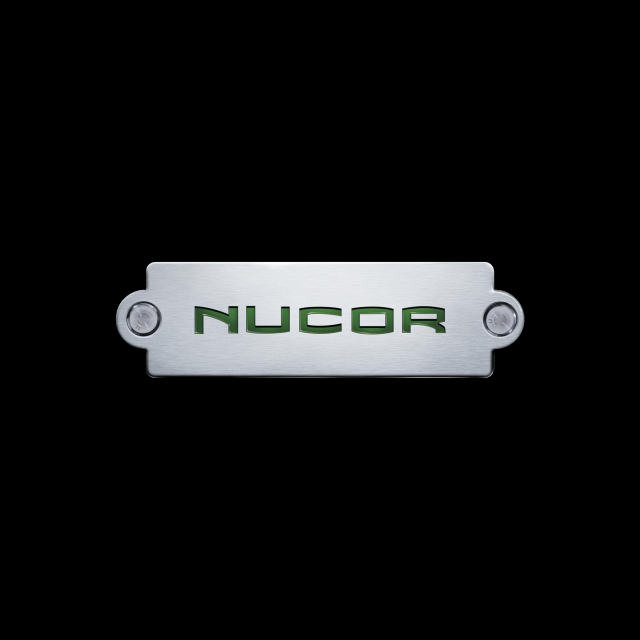Анализ компании EQT Corporation
1. Резюме
Плюсы
- Цена (48.84 $) меньше справедливой цены (56.06 $)
- Доходность акции за последний год (33.73%) выше чем средняя по сектору (-7.75%).
- Текущий уровень задолженности 23.1% ниже 100% и уменьшился за 5 лет с 28.28%.
- Текущая эффективность компании (ROE=11.75%) выше чем в среднем по сектору (ROE=0.8101%)
Минусы
- Дивиденды (1.55%) меньше среднего по сектору (2.34%).
Похожие компании
2. Цена акции и эффективность
2.1. Цена акции
2.2. Новости
26 февраля 12:07 Тарифы Трампа на сталь могут больно ударить по сланцевикам из США
4 декабря 10:23 С Лондонской биржи с начала года ушли 45 компаний за счет M&A
2.3. Рыночная эффективность
| EQT Corporation | Materials | Индекс | |
|---|---|---|---|
| 7 дней | -10% | -6.2% | -4.1% |
| 90 дней | 7.9% | -14% | -8.3% |
| 1 год | 33.7% | -7.7% | 8.1% |
EQT vs Сектор: EQT Corporation превзошел сектор "Materials" на 41.48% за последний год.
EQT vs Рынок: EQT Corporation превзошел рынок на 25.62% за последний год.
Стабильная цена: EQT не является значительно более волатильным чем остальная часть рынка на "New York Stock Exchange" за последние 3 месяца, типичные отклонения в пределах +/- 5% в неделю.
Длительный промежуток: EQT с недельной волатильностью в 0.6487% за прошедший год.
3. Резюме по отчету
4. Фундаменальный анализ
4.1. Цена акции и прогноз цены
Ниже справедливой цены: Текущая цена (48.84 $) ниже справедливой (56.06 $).
Цена не значительно ниже справедливой: Текущая цена (48.84 $) немного ниже справедливой на 14.8%.
4.2. P/E
P/E vs Сектор: Показатель P/E компании (9.28) ниже чем у сектора в целом (51.69).
P/E vs Рынок: Показатель P/E компании (9.28) ниже чем у рынка в целом (73.51).
4.2.1 P/E Похожие компании
4.3. P/BV
P/BV vs Сектор: Показатель P/BV компании (1.09) ниже чем у сектора в целом (5.65).
P/BV vs Рынок: Показатель P/BV компании (1.09) ниже чем у рынка в целом (22.32).
4.3.1 P/BV Похожие компании
4.4. P/S
P/S vs Сектор: Показатель P/S компании (3.18) ниже чем у сектора в целом (11.03).
P/S vs Рынок: Показатель P/S компании (3.18) ниже чем у рынка в целом (15.92).
4.4.1 P/S Похожие компании
4.5. EV/Ebitda
EV/Ebitda vs Сектор: Показатель EV/Ebitda компании (9.08) ниже чем у сектора в целом (11.91).
EV/Ebitda vs Рынок: Показатель EV/Ebitda компании (9.08) ниже чем у рынка в целом (22.62).
5. Доходность
5.1. Доходность и выручка
5.2. Доход на акцию - EPS
5.3. Прошлая доходность Net Income
Тренд доходности: Отрицательный и за последние 5 лет упал на -55.88%.
Ускорение доходности: Доходность за последний год (0%) превышает среднюю доходность за 5 лет (-55.88%).
Доходность vs Сектор: Доходность за последний год (0%) ниже доходности по сектору (853.1%).
5.4. ROE
ROE vs Сектор: Показатель ROE компании (11.75%) выже чем у сектора в целом (0.8101%).
ROE vs Рынок: Показатель ROE компании (11.75%) ниже чем у рынка в целом (25.01%).
5.5. ROA
ROA vs Сектор: Показатель ROA компании (6.86%) ниже чем у сектора в целом (7.25%).
ROA vs Рынок: Показатель ROA компании (6.86%) выже чем у рынка в целом (6.62%).
5.6. ROIC
ROIC vs Сектор: Показатель ROIC компании (-17.64%) ниже чем у сектора в целом (13.16%).
ROIC vs Рынок: Показатель ROIC компании (-17.64%) ниже чем у рынка в целом (9.31%).
7. Дивиденды
7.1. Дивидендная доходность vs Рынок
Низкая див доходность: Дивидендная доходность компании 1.55% ниже средней по сектору '2.34%.
7.2. Стабильность и увеличение выплат
Стабильность дивидендов: Дивидендная доходность компании 1.55% стабильно платится на протяжении последних 7 лет, DSI=0.93.
Слабый рост дивидендов: Дивидендный доход компании 1.55% слабо или не растет за последние 5 лет. Рост на протяжении только 3 года.
7.3. Процент выплат
Покрытие дивидендами: Текущие выплаты из доходов (13.16%) находятся на не комфортном уровне.
Оплатите подписку
Больше функциональности и данных для анализа компаний и портфеля доступно по подписке





